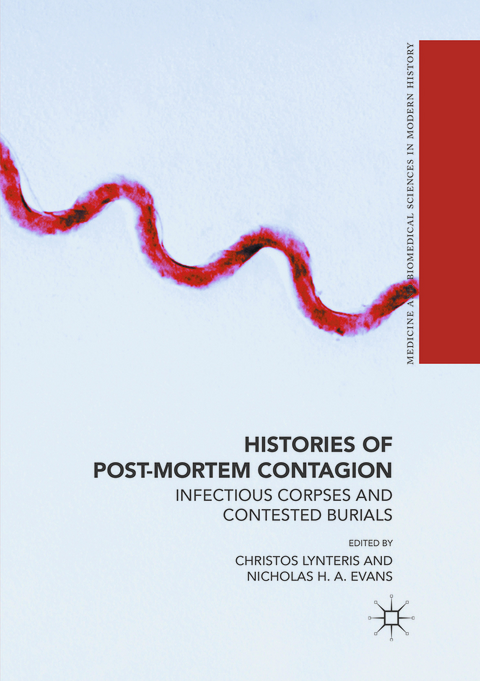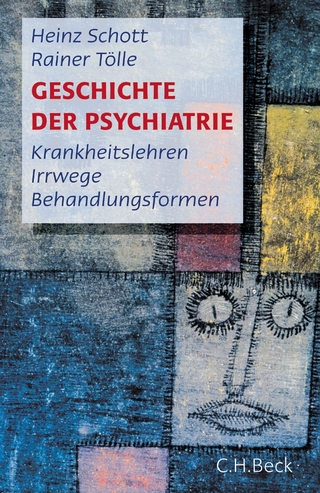
Histories of Post-Mortem Contagion
Springer International Publishing (Verlag)
978-3-319-87431-9 (ISBN)
This edited volume draws historians and anthropologists together to explore the contested worlds of epidemic corpses and their disposal. Why are burials so frequently at the center of disagreement, recrimination and protest during epidemics? Why are the human corpses produced in the course of infectious disease outbreaks seen as dangerous, not just to the living, but also to the continued existence of society and civilization? Examining cases from the Black Death to Ebola, contributors challenge the predominant idea that a single, universal framework of contagion can explain the political, social and cultural importance and impact of the epidemic corpse.
Christos Lynteris is Senior Lecturer in Social Anthropology at the University of St Andrews, UK, and Principal Investigator of the ERC-funded research project Visual Representations of the Third Plague Pandemic. He is the author of The Spirit of Selflessness in Maoist China (Palgrave, 2012) and Ethnographic Plague (Palgrave, 2016). Nicholas H. A. Evans is a Fellow in the Department of Anthropology at the London School of Economics, UK. His work focuses on understanding the comparative and historical nature of doubt and uncertainty, and he was a member (2014-17) of the Visual Representations of the Third Plague Pandemic project at the University of Cambridge.
1. Introduction: The Challenge of the Epidemic Corpse, Christos Lynteris & Nicholas H A Evans.- 2. Failed Ritual? Medieval Papal Funerals and the Death of Clement VI (1352), Joëlle Rollo-Koster.- 3. Fear and the Corpse: Cholera and Plague Riots Compared, Samuel Cohn.- 4.Bloeming-typhoidtein: Epidemic Jingoism and the Typhoid Corpse in South Africa, Jacob Steere-Williams.- 5. Suspicious Corpses: Body Dumping and Plague in Colonial Hong Kong, Christos Lynteris.- 6. Composing and Decomposing Bodies: Visualizing Death and Disease in an Era of Global War, Pestilence, and Famine, 1913-23, Michael Anton Budd.- 7. Shrouded Corpses, Walking Cadavers: The Shifting of "the Choleras" in Depictions of Southeastern Captivity.
"The book ... is an essential and powerful work of compilation of diverse experiences related to epidemics, body dumping, fear of contamination, hasty burials, isolation, plague riots, all themes of the greatest relevance today. ... It is written in a language accessible to all audiences and achieves the goal of the series Medicine and Biomedical Sciences in Modern History to cut across conventional academic boundaries through stimulating interdisciplinary approaches. ... This book definitely held my interest." (Simone Rodrigues Pinto, Human Remains and Violence, Vol. 8 (1), April, 2022)
“The book … is an essential and powerful work of compilation of diverse experiences related to epidemics, body dumping, fear of contamination, hasty burials, isolation, plague riots, all themes of the greatest relevance today. … It is written in a language accessible to all audiences and achieves the goal of the series Medicine and Biomedical Sciences in Modern History to cut across conventional academic boundaries through stimulating interdisciplinary approaches. … This book definitely held my interest.” (Simone Rodrigues Pinto, Human Remains and Violence, Vol. 8 (1), April, 2022)
| Erscheinungsdatum | 26.01.2019 |
|---|---|
| Reihe/Serie | Medicine and Biomedical Sciences in Modern History |
| Zusatzinfo | XVII, 230 p. 8 illus. |
| Verlagsort | Cham |
| Sprache | englisch |
| Maße | 148 x 210 mm |
| Gewicht | 331 g |
| Themenwelt | Geisteswissenschaften ► Geschichte ► Allgemeine Geschichte |
| Studium ► Querschnittsbereiche ► Geschichte / Ethik der Medizin | |
| Naturwissenschaften | |
| Schlagworte | Anthropology • Body • burial • Contagion • Death • Disease • Ebola • Funeral • mortuary practices • post-mortem • Tradition |
| ISBN-10 | 3-319-87431-4 / 3319874314 |
| ISBN-13 | 978-3-319-87431-9 / 9783319874319 |
| Zustand | Neuware |
| Haben Sie eine Frage zum Produkt? |
aus dem Bereich


